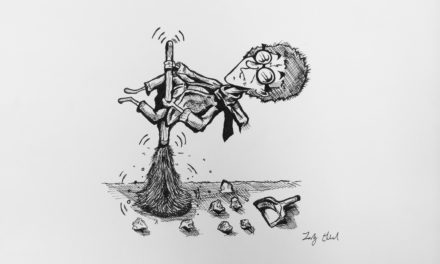When one asks a child about his or her favorite part of school that has had a lasting effect, the first thing mentioned is a teacher. A great teacher is remembered for his or her impeccable methods of teaching. Teachers are the core of any school, and without them the institution would fail.
However, when a teacher has a problem with standards and methods, how much can a child expect to learn?
It is no secret that the American education system has been challenged in recent years by the much stronger education systems in other countries. Despite this, teachers remain the lifeblood of America, the pillar of support for America’s youth, playing an integral role in securing the future of the country. As a result, it is imperative that the American education system does all in its power to improve the effectiveness of educators, both teachers and administrators. The methods used and the standards to which teachers are held, however, must take into account the many aspects of teaching.
Education reform is progressing under the leadership of President Obama. Accountability for student progress is shifting from a ‘one size fits all’ target standard based on standardized test scores to demonstrate student achievement to a student growth model. Under President Obama’s Department of Education contest, Race to the Top, student progress now encompasses “alternative measures of student learning and performance,” a great improvement over former policies. Under this new model, however, teacher evaluation methods are becoming increasingly controversial, as teachers’ performance is evaluated based on their students’ progress, both individually and collectively. While student achievement gains are important, other factors must be taken into account while formulating models such as this. Currently, the Race to the Top initiative provides 58 points to state education systems for “improving teacher and principal effectiveness based on performance,” leading state systems to implement performance-based evaluations. Teaching evaluation measures, however, wrongly attribute such performance issues to the teacher. It presents a problem when a teacher’s effectiveness is based on one aspect of the multidimensional field of teaching.
American education is strong on various aspects of multiculturalism and diversity but with that comes the problem of giving attention to every child. Thus, students are now given standardized tests because everyone wants measurable results. Tax payers always want to know if the tax dollars that are spending in public education are getting a good return. The federal tests, National Assessments of Educational Progress, measure progress over time of students in the nation and the states.
There is constant pressure to increase test scores. Another problem with test accountability is that it removes all responsibility from children and their families, and it imposes serious consequences on students, educators and schools on the basis of scores that might have a measurement error. The overemphasis on test scores undermines other important goals of education and the love of learning.
Student progress results should be a factor in teacher evaluation tools, but should not exceed the weight of effective classroom practices along with student work.
Thus, student progress from one year to another should not be the dominant factor in evaluating the effectiveness of teachers and principals, but should have equal weight with every other accurate measure of teachers’ instruction.
Accurate measures include classroom environment, instructional planning, formative assessment practices and implementation of instructional strategies, in addition to student progress. One aspect of teaching must not be allowed to determine all of a teacher’s evaluation.
– By Falak Mawani and Kyle Johnson
The Emory Wheel was founded in 1919 and is currently the only independent, student-run newspaper of Emory University. The Wheel publishes weekly on Wednesdays during the academic year, except during University holidays and scheduled publication intermissions.
The Wheel is financially and editorially independent from the University. All of its content is generated by the Wheel’s more than 100 student staff members and contributing writers, and its printing costs are covered by profits from self-generated advertising sales.






